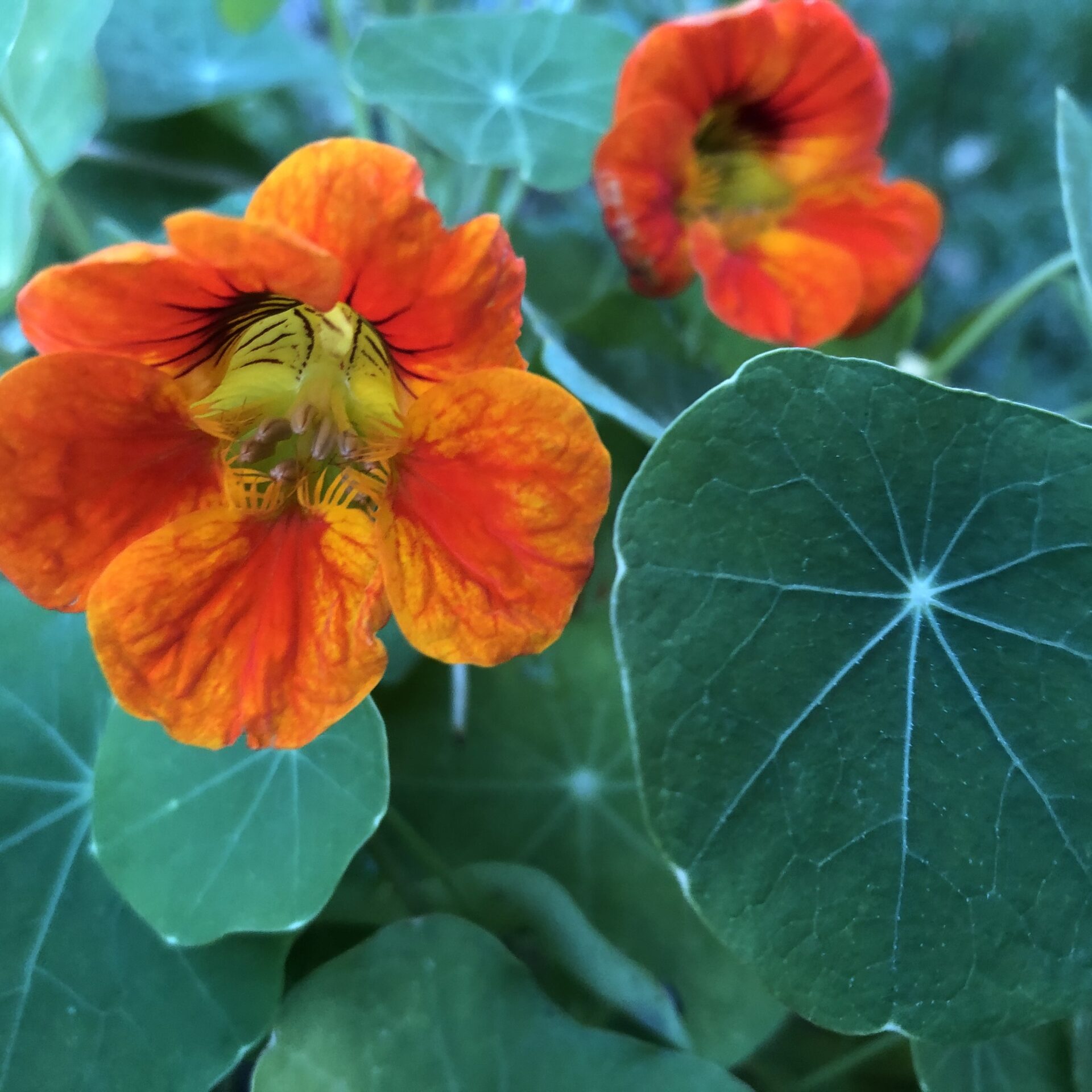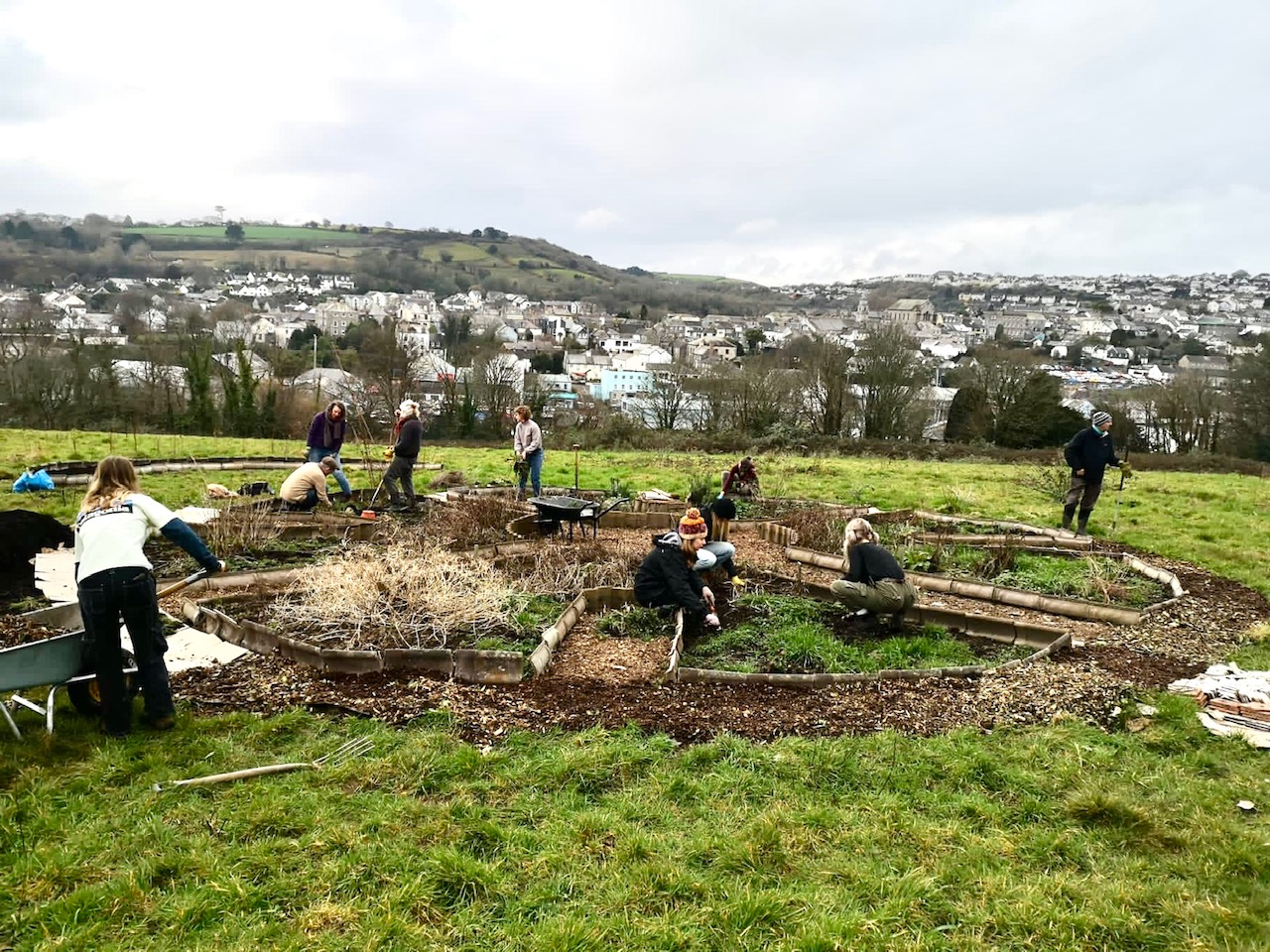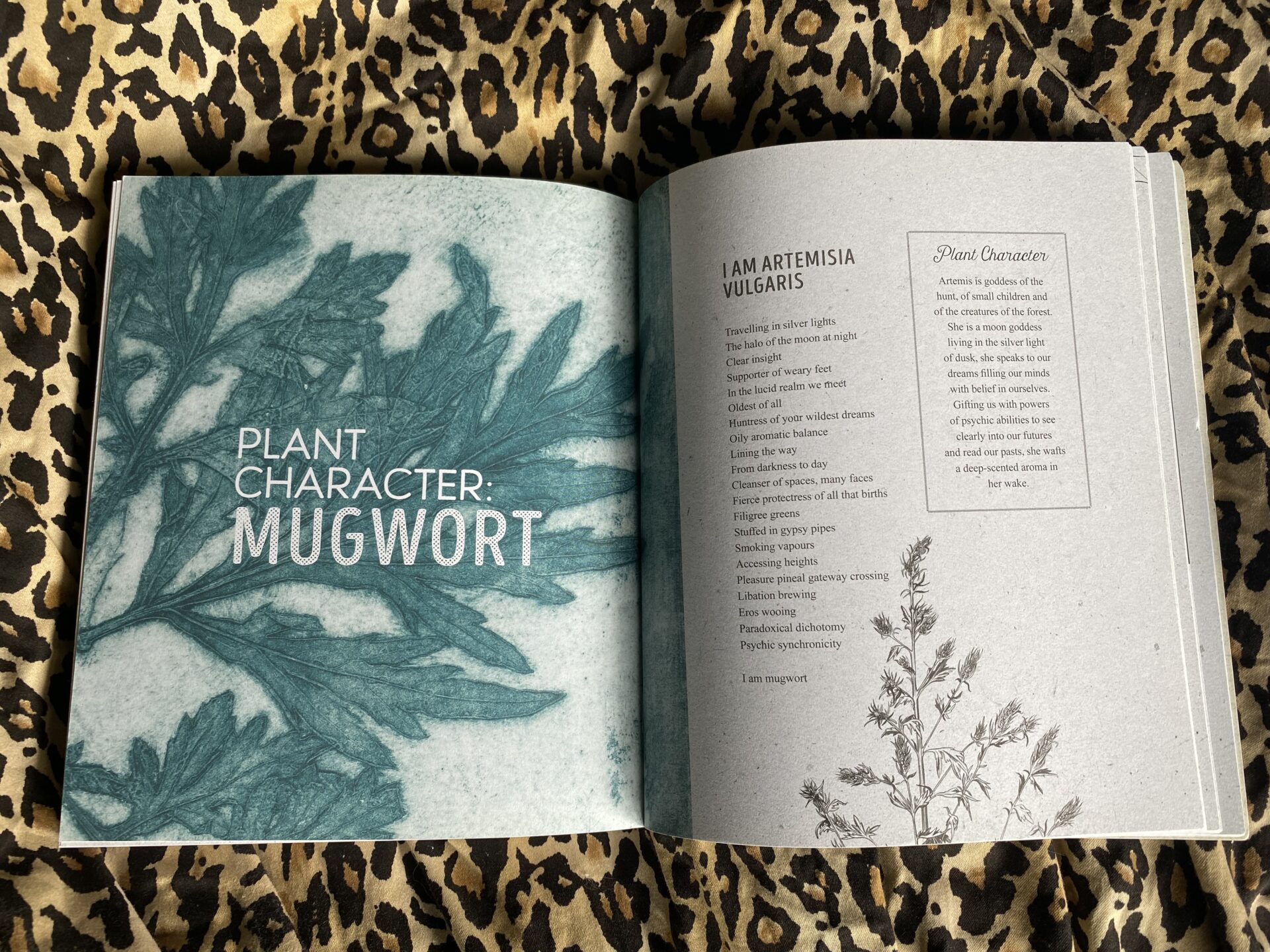Check List for Respiratory Infection Support:
• Nurture and soothe the lung tissue – herbal teas of elecampane, liquorice, marshmallow root, plantain leaf
• Thin and then expectorate mucous and debris –
• drink lots of water
• Practice steam inhalations with hot water and a drop of lavender, eucalyptus and bay,
• Rub tiger balm (for adults) on the feet and a little on the chest
• Onion poultice on the chest/back
• Create a situation for the most comfortable breathing – propping up in bed, encouraging gentle breathing, slow and calm
• Resting so that any fluid gathering in the lungs isn’t made worse or moved around further compromising the lungs
• Breathing exercises
The lungs of our planet have been attacked…
Plants and trees take in carbon dioxide and release oxygen back into the air in their process of photosynthesis. This is why the Amazon, which covers 2.1 million square miles, is often referred to as the “lungs of the planet”. The forest produces around a fifth of the oxygen in our planet’s atmosphere. This is an often-cited fact but tiny ocean plants called phytoplankton contribute between 50 to 85 percent of the oxygen in Earth’s atmosphere. However, ecological scientists believe that phytoplankton levels have declined by 40 percent since 1950 due to the warming of the ocean. The last few years has seen a spotlight pointed at the climate crisis. Discussions have been focused around how the atmosphere is changing. Oxygen, the most vital component of the atmosphere for animals, makes up one-fifth of the air we breathe, but seems to be declining. The main cause is the burning of fossil fuels, which consumes free oxygen.
Could this parallel our current COVID-19 crisis?
A virus which inhabits our human lungs and makes breathing difficult. There have been articles questioning why the virus and post viruses have arrived linking them to our human encroachment on the natural world. There has always been links made from the micro to the macro…what’s going on at a global level being linked with communities and individuals.
The article ‘Tip of the iceberg’, questions if our destruction of nature is responsible for SARS-Cov-2 which leads to COVID-19 when it developed as a disease in humans.
Jon Vidal talks about how, as habitat and biodiversity loss increase globally, the coronavirus outbreak may be just the beginning of mass pandemics. Viruses can mutate quickly; the future is very uncertain at these times. Read his full article here:
https://ensia.com/features/covid-19-coronavirus-biodiversity-planetary-health-zoonoses/
The word ‘Lung’ is derived from the Old English lungen, the word for Light. A beautiful image to consider that we are all breathing in healing light. In a sense, we are breathing in light energy. Plants and trees produce oxygen during the process of converting sunlight into energy to feed themselves and the mycorrhiza that interacts with their root system. Oxygen is a by-product of the conversion of light and we breath it in.
The Breath
We breath without thinking. Breathing is classes as part of the autonomic nervous system, as in, it happens automatically. However, we also have the ability to affect our breathing rate. We have both conscious and subconscious control of our breathing rate. The breath can be used as a vehicle to manage the nervous system and our responses to external or internal emotional stimuli. We can use the breath to calm the nervous system or to hype it up. Whim Hof, The ‘Iceman’, talks about the breath strongly affecting the chemical and physiological activities in your body.
The idea of Prana in Vedic scriptures or Chi in Chinese philosophy, relates to using the breath to move energy around the body, again recognising the breath as a vital tool for health and wellbeing. This is simplified and there are differences between Chi and Prana but exercises for both increase vitality for the practitioner.
In Greek medicine, the lungs and the heart were at the core of creating the vital faculty, the source of life in the body.
Breath is recognised globally as essential to health, life, vitality. In communicating with our breath, we are connecting with our life force or spirit.
The Respiratory System
Let’s look a little more at the lungs and general approaches to support – taken from the Sensory Herbal Handbook –
After birth, a baby takes their first breath, inhaling and beginning their relationship with the external environment. This marks independence from the supporting environment of the mother’s womb and interaction with life on the outside. We will continue to breathe for the rest of our life.
Our breath both sustains us and represents our life force. The autonomic nervous system, as the name implies, monitors via the central nervous system, the functioning of the body and regulates this accordingly.
It connects both our conscious awareness and the subconscious workings of the body. We breathe subconsciously, the autonomic nervous system (ANS) regulating how quickly we need to breath in order to provide enough oxygen to our cells. We also have the ability to consciously guide the breath, altering the depth and speed to relax, to energise and to initiate altered states. The lungs ensure that there is enough oxygen in our blood but also provide a route of elimination of unwanted products from the blood such as carbon dioxide (CO2).
Air travels from the nose (or the mouth) to the lungs through the trachea, the bronchi, into the bronchioles, where gases are exchanges through the mucosa or tissue of the lungs into the blood stream that has been fed directly from the heart. The blood travels straight back to the heart for passage to the rest of the body. Inhalation and exhalation are supported by the diaphragm which enables the lungs to draw in and expel air from the lungs. It is not solely gases that are exchanged through the lungs but the primary function is to excrete carbon dioxide from the bloodstream and to ensure oxygen is taken into the blood stream.
If any of these areas are compromised it affects the breathing and therefore the levels of oxygen in the blood and ultimately, life force.
Keeping the lungs clear, the membranes healthy and protected and ensuring there is enough relaxation in the lungs for deep, full breaths is important in any herbal treatment plan.
COVID-19 and the lungs
Information about the virus is constantly changing – at the time of this article being written there is much contention and debate around the subject.
What we know to date about covid19 disease – is that it can affect the tissue deep within the lungs, damaging the cilia (fine hairs that expel mucous). Damage locally can lead to a buildup of fluid and debris in the lungs and pneumonia as well as other complications with the heart, liver and kidneys as the system works to rid the body of the inflammatory mediators produced at the site.
What are the symptoms of COVID-19?
Symptoms of COVID-19 (from the NHS website)
• a high temperature – this means you feel hot to touch on your chest or back (you do not need to measure your temperature to confirm this)
• a new, continuous cough – this means coughing a lot for more than an hour, or 3 or more coughing episodes in 24 hours (if you usually have a cough, it may be worse than usual.
So two of the main symptoms are a cough and a high temperature we have a previous article about treatments of fevers here. It has however since been reported that there can be digestive symptoms without much else or a sore throat. The reports have become much more varied in the expressions of symptoms. This makes it very difficult (unless symptoms are very typical) to tell if you have had Corona and lots of folk are isolating with common colds or flu. Of course this is the safest option to prevent spreading but it has become a rather blurred picture.
If the lung tissue becomes damaged by the virus it will create mucous, fluid, debris that needs to be cleared from the area, this irritation and lung will create a cough reflex. It is also a clever way that the virus has to make us cough and pass it on to others.
Daily Support for the Lungs
There are some simple things that can be done to support the lungs.
Steam inhalations are a great way to keep fluids loose and thin in the lungs as well as interfering with the virus. You could add 3 drops of essential oils such as lavender, eucalyptus, or tea tree.
Boil water, pour it into a large bowl and lean over, so the face is directly above the water (you may need to add a little cold water as the steam can be extremely hot), add 3 drops of essential oil. Cover the head with a towel, and breathe slowly and deeply through the nose.
Keep a box of soft tissues nearby as this technique can shift mucous and blowing it out as it is released enables more deep breathing the steam. We would caution using this technique in pregnancy.
Breathing exercise 3-Part Breath Technique
Three-Part Breath technique is designed to bring greater awareness to how you breathe and what natural breathing patterns are. This can be used when you aren’t in the midst of an infection.
The “three parts” are the abdomen, diaphragm, and chest.
Begin by settling get completely comfortable on the floor, perhaps use a bolster or cushions under their knees to protect and support the lower back. First breathe consciously and deeply, completely filling and emptying your lungs for a few breaths first.
Now let us try the Three-Part Breath.
Send your breath into their Upper chest (the area between the throat and the heart centres, at the top of the breast bone), as you, place one hand on this area and direct your breathing into the space for 5 long breaths.
Then move your hand down to the diaphragm or solar plexus area (at the dip below the breast bone, between the ribs, also the stomach area) and repeat the 5 deep breaths sending your breath to this area.
Move down to the abdomen just below the tummy button and repeat the process.
All the while observe closely how your breath is moving and asking yourself which space feels the easiest to breath into.
Return to normal breathing.
This breathing technique is both calming and can gently increase the amount of oxygen entering the lungs.
In the case of a cough or cold, this may not be possible, depending on how your breathing is affected. This is a great, calming tool to connect you in with the breath on a daily basis.
Breathing Through
If you suffer from hay fever or asthma, a gentle breathing technique like this can really help in the early stages of onset of restricted breathing. As oxygen becomes restricted in situations where the lungs essentially tighten up…utilising the skills of gentle, calm breathing can really help to control the autonomic nervous system response and prevent panic setting in, which can often further restrict the breathing. A tool we can all practice regularly.
The Power of Onions
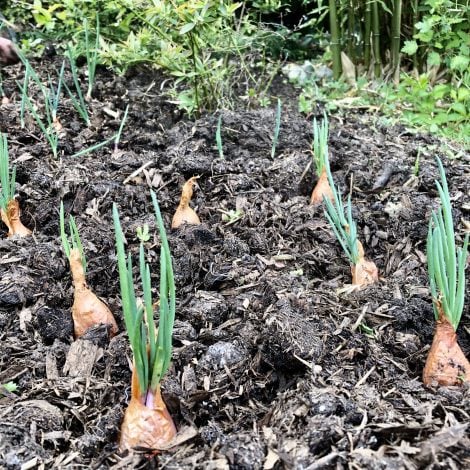
Onions and their cousins the mighty Garlic are members of the Allium family other family members are shallots, leeks and chives. This superfood bunch are easy to grow garden vegetables and are packed full of various health promoting vitamins, minerals and potent plant compounds. Our ancient ancestors recognised the medicinal powers of onions and they are written about plenty in old medical texts. Onions are high in Vitamins C, B and Potassium-rich.
Most of us keep onions and sugar or honey in the cupboard so the following kitchen remedies are something that most of us can create without having to get fancy ingredients.
Onion poultice
Grandma’s remedies
External application of a warm onion poultice is super helpful in aiding to alleviate chest congestion. The warmth and medicine from the poultice seeps into the chest area through the skin and works to break up coagulated mucus.
Onions are renowned for their expectorant properties thus helping in thinning out the mucus secretions, making them easier to expel.
This is a safe and effective old remedy to support in easing spasmodic coughs and has been applied as a specific for pneumonia.
1. Chop up three onions and if you wish to add some cloves of garlic for an extra antibiotic action this is the stage to do it
2. place in a tea towel and bash them to break up the oils and juices
3. place in a large bowl, and add 4 tablespoons of boiling water, bash together with the end of a rolling pin to break up the onions further
4. Place the entire mash back in the cloth, large enough to wrap and keep the entire mash over an area roughly the size of your patient’s chest.
5. Apply the wrapped onion poultice to the chest or back – depending
6. Place a hot water bottle or heating pad over the top of the poultice to heat for greater penetration.
7. Rest with the poultice on for at least 20 or 30 minutes.
Repeated 3 times a day until relief is obtained.
Applying the onion poultice before bed can aid with obtaining more restful sleep which is very important to the healing process
Onion Syrup
Onion syrup is a winner to help soothe the lungs and support a busy immune system during viral infection and it’s so easy to make. There are also some simple, easy to make and effective remedies that can be made in the kitchen from stuff you may already have in. See our delicious (if a little pungent) onion syrup recipe.
KITCHEN REMEDIES – Onion Syrup Recipe
Sensory Herbalism Remedies
As herbalists we look at what types of herbal interactions we are trying to effect – all plants interact with our tissues and bodies and there are many plants that have specific actions for the respiratory system. These actions are
Respiratory system tonics – literally toning the mucous membranes of the entire Respiratory system
Expectorants – help to thin and bring up mucous – they work in differing ways to achieve this
Anti-tussive – suppresses coughs
Mucolytics / anti-catarrhal – move, break down and shift mucous
Anti-spasmodic / Broncho-relaxants – relax and sooth spasm
Connective tissue restoratives – help to rebuild and strengthen connective tissue
Demulcent – derived from the Latin “caress” a herbal agent that forms a soothing coating over a mucous membrane, relieving minor pain and inflammation of the membrane
Circulatory herbs – aid with the movement of blood the bodies major transportation system
Lymphatics – support and encourage the lymph
Anti-microbial – work specifically with infection from virus, bacteria and fungi
Anti-inflammatory – bring down inflammation
Lung Tonic
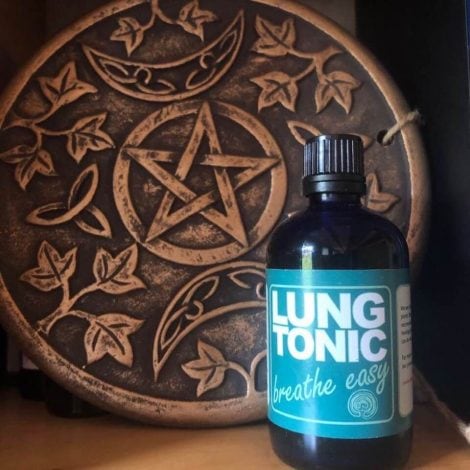
We have been making a lovely generalised lung tonic that contains plantain, coltsfoot, thyme, mullein, elecampane, marshmallow and liquorice tinctures.
• Plantain also known as Plantago spp. is a wonderful herb for supporting lung tissue, especially where there is inflammation. It helps to create a protective, healthy barrier at the level of the mucosa in the lungs. Plantain leaves can be added to a herbal tea blend to support the lung tissue both before and during infection.
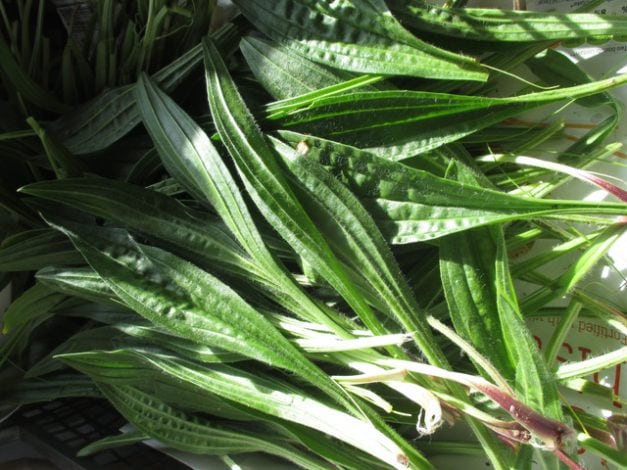
• The tonic contains Inula helenium, also known as elecampane is a boundless creature and a primary lung plant. The root can be decocted, simmered gently for up to ten minutes and drunk as an amazing opening supportive respiratory herb.

• Thyme is also present in the mix is a wonderful antimicrobial perfect for respiratory infections with an expectorant action to aid expulsion of mucous from the lungs.
• Mullein is a wonderful faithful soothing and softening pulmonary plant that supports the other ingredients.
Other excellent respiratory herbs –
• Daisy with her saponins is a gentle lung herb with expectorating actions, super useful with children and the elderly.
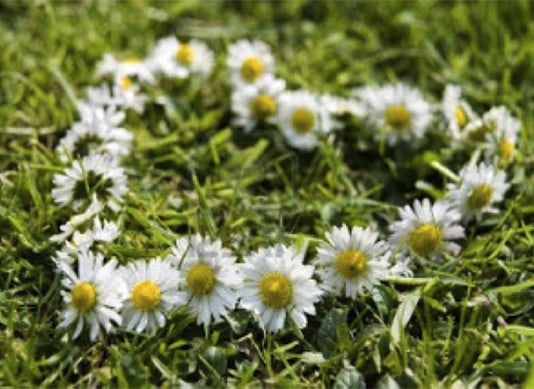
• Horseradish is very clearing and is an excellent support to breathing especially where there is sinus infection.
• Hyssop’s antispasmodic properties help clear the lungs from a wet cough by getting phlegm up and out of the body. At the same time, it can soothe dry, irritating hacking that keeps one up at night.
Breathe Easy Decoction –
consisted of liquorice, elecampane and marshmallow roots.
Liquorice is both soothing and an expectorant. It needs to be avoided with high blood pressure, long-term steroid use, or with blood thinning medication. These three herbs are all roots which can be simmered for 10 minutes to create a powerful lung tea.
A note about Herbal Decoctions –
When working with roots or barks (harder materials), us herbalists use decoctions to retrieve the medicine from the herbs.
A decoction is an herbal preparation created by boiling herbs in liquid, usually water but sometimes we use milk or wine too, we are sequestering the soluble active principles of herbs.
Directions;
Use one teaspoon of herbs per cup of cold water.
Add the herbs and cold water to a pot.
Place that pot on the stove and bring up to a gentle boil.
Put a lid on the pan and lightly simmer for twenty mins.
Remove from the heat and let your decoction cool to drinking temperature.
Strain out the herbs.
Refrigerate leftovers and use within 48 hours.
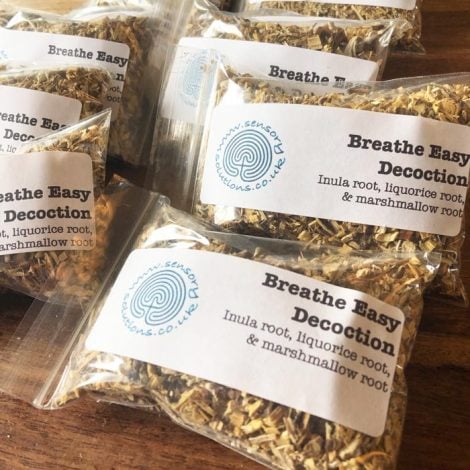
Here is a link to our shop where you can find various herbal remedies – Sensory Herbal Shop


